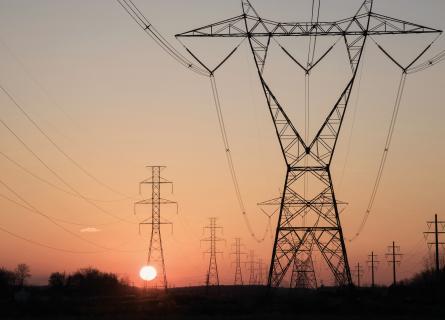
Keeping the levels up: Why storage has a key role to play
The world is shifting away from traditional methods of generating electricity. The old paradigm of big centralised power stations burning fossil fuels to meet an unrelenting rise in demand is outdated and, with advancements in low-carbon technology, expensive.
As climate change has crept up the agenda, a concerted effort has been taken by people and governments to move towards a greener future. As a result, we are becoming increasingly reliant on intermittent sources of power generation such as wind and solar energy. Combine this with trends for minimising waste of energy through efficiency measures, the direction the industry is to take is clear.
Storage and technology
The challenge is shifting towards the question of integrating such large volumes of renewables with often unstable generation patterns. Flexibility that can be provided by market players at both the local and regional level is becoming increasingly important. Storage has a key role to play in this aspect of the energy transition. ‘When’ and ‘where’ electricity is produced and consumed is critical in an electricity system where production is governed by the weather. The choice of which technology to deploy to meet the needs of the system must be given careful consideration and there is no ‘one-size-fits-all’ approach when it comes to managing the power system of the future, a challenge that brings opportunities for all types of market players.
To bring about the amount of flexibility required at a scale compatible with a net zero-carbon world, power storage offers an ideal solution owing to the (increasing) range of technologies at our disposal. However, technology selection will need to match the specific challenges being addressed. It is not cost effective to deploy a lithium-ion battery with a duration of 4 hours (the length of time it can be dispatched continuously at maximum output before becoming depleted) to charge in the summer and store energy until it is needed in the winter. However, if you need something that can quickly respond to changes in the system for a limited time (such as for frequency response) it makes for a persuasive option.
Hydrogen produced overnight from excess renewables to used at peak times during the day is equally uneconomic, as the round-trip efficiency (total energy lost in conversion from electricity to hydrogen and back to electricity) is only around 40% - however as a seasonal store for very large volumes of energy, the practical and business case is more compelling. The pandemic has offered a glimpse of the challenges of operating a system with high levels of intermittent sources of generation. The reduction in demand attributed to a slump in economic activity resulted in a large number of periods in which renewable generation dominated the system in many countries, in some cases leading to negative prices and resulting in challenges for system operators in managing the physical electricity system.
How to manage your system
Across Europe different countries saw the cost of managing their systems spiral as low demand and high renewables output resulted in increased problems with locational constraints, inertial constraints and other balancing issues (in the UK for example, April and May 2020 saw a doubling in the cost of managing the system for National Grid versus the previous year). However, not all issues faced by grid operators are a manifestation of the pandemic situation. Issues with wind in northern Germany or power flows from southern Italy towards the North, transferring power from the enormous hydropower stations in the provinces of Sichuan and Yunnan in China to the centres of the demand, along with many others are a reality today and existed before the direct challenges raised by the pandemic. Different types of energy storage can help solve these problems, and the business case already exists today. Employing the right technology in the right place to meet these challenges will be one of the defining success factors for market players.
For example, pump storage may trouble the system through inertia whilst pumping and dispatching, as can mechanical batteries. There is a need for longer-duration storage to manage large locational grid constraints and shorter duration storage to manage more localised critical peaks in the transmission or distribution networks to defer expensive and potentially underutilised investment in the grid. Some of these challenges have led to the development of innovative products and solutions. Local flexibility markets offer targeted contracts for services in particular regions of the grid and are gaining traction as more of these issues emerge.
Business case for storage
Whilst there is clearly a business case for investment in storage today, these opportunities only represent a small proportion of what storage can offer and how much will be needed in the future of the low-carbon global energy system. The key to unlock this value will be in designing markets and products that deliver the system stability and flexibility required by the energy transition at the least-possible cost to consumers through providing the correct price signals to investors. Technical challenges also remain, for instance, how will a system with hundreds of gigawatts of storage ensure that the resources available are used at the right time? The careful management, and availability of information and data will enable operators and traders to make the right decisions at the right time. Digitalisation of the sector will also help to encourage consumer participation and we are already seeing the beginnings of this today with apps on your smartphone telling you when electricity is cheapest. The cost reductions that come with digitalisation in communicating complex messages to end consumers in simple ways or, more likely, automatically optimising consumers’ use of power (including inherent storage in electric vehicles) will lead to a revolution in the way that people think about and manage their energy usage.
It is clear that electricity and energy storage will have an important role to play as we transition to a low-carbon economy. The winners of the transition will not just be those that are investing in the right technology at the right time, it will be those with a high degree of exposure to climate change – all of us.


